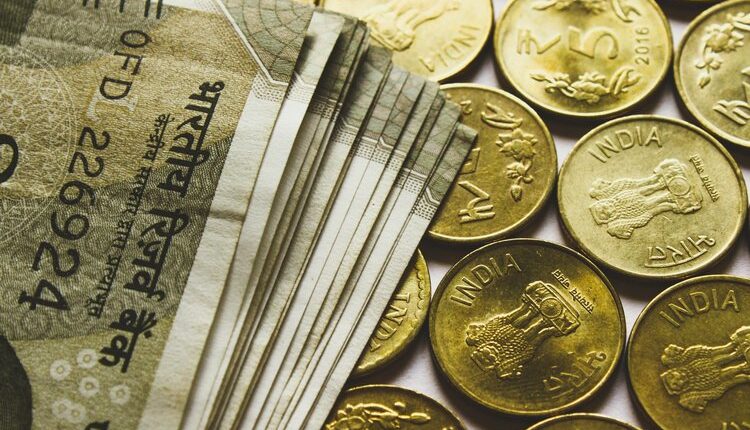- Indian Rupee posts modest gains amid the further escalation of geopolitical tensions in the Middle East.
- The rising geopolitical tension between Israel-Hamas might limit the INR’s upward path.
- The Federal Reserve’s Beige Book update showed the US economic outlook had “little to no change” between September and early October.
The Indian Rupee (INR) edges higher against the US Dollar (USD) on Thursday. However, the further escalation of geopolitical tensions in the Middle East and the rise in oil prices might cap the upside of the Indian Rupee and benefit a safe-haven asset like the USD. Furthermore, the Indian Rupee might encounter challenges as a $5 billion RBI swap transaction is set to mature next week. Traders are concerned about the Dollar supply in the Indian banking system as the Reserve Bank of India (RBI) intends to buy USD for its reserves instead of extending the deal.
That being said, elevated oil prices might continue to linger as a risk factor for the Indian Rupee. Market participants will take more cues from the weekly US Jobless Claims and the Philly Fed index on Thursday. The Federal Reserve Chair Powell is also scheduled to speak. On Friday, the attention will shift to India’s FX Reserve and RBI Meeting Minutes.
Daily Digest Market Movers: Indian Rupee upside remains limited ahead of Fed Powell’s speech
- The US Building Permits for September fell to 1.475M, above the estimated 1.45M.
- The US Housing Starts for the same period rose to 1.35M, below the market consensus of 1.38M.
- According to the Beige Book, US economic activity showed “little to no change” between September and early October.
- Federal Reserve (Fed) Governor Christopher Waller stated that it’s too soon to tell if more policy rate action is needed while adding that the decision will depend on data.
- US Retail Sales for September rose by 0.7% MoM, beating the market consensus of 0.3%. Retail Sales Control Group climbed 0.6% MoM versus 0.2% prior.
- The Indian Wholesale Price Index (WPI) for September came in at -0.26% versus 0.52% prior, below the market consensus of 0.50%.
Technical Analysis: Remains confined in a narrow trading band of 83.15-83.30
Indian Rupee has hovered in a narrow range between 83.15 and 83.30 this week. The USD/INR pair holds above the 100- and 200-day Exponential Moving Averages (EMA) on the daily chart, indicating that the path of least resistance for the pair is to the upside. Some follow-through buying could pave the way to the all-time highs around 83.45 en route to a psychological round mark at 84.00. On the downside, the 83.00–83.10 region acts as a critical support level for the USD/INR pair. A break below this support zone could lead to a drop in the pair towards 82.82 (low of September 12).
US Dollar price in the last 7 days
The table below shows the percentage change of US Dollar (USD) against listed major currencies in the last 7 days. US Dollar was the strongest against the New Zealand Dollar.
| USD | EUR | GBP | CAD | AUD | JPY | NZD | CHF | |
| USD | 0.82% | 1.48% | 0.98% | 1.82% | 0.53% | 3.07% | -0.22% | |
| EUR | -0.83% | 0.66% | 0.15% | 1.00% | -0.30% | 2.27% | -1.05% | |
| GBP | -1.50% | -0.66% | -0.51% | 0.34% | -0.97% | 1.62% | -1.73% | |
| CAD | -0.98% | -0.16% | 0.51% | 0.85% | -0.45% | 2.12% | -1.22% | |
| AUD | -1.85% | -1.02% | -0.34% | -0.86% | -1.31% | 1.28% | -2.07% | |
| JPY | -0.53% | 0.29% | 0.95% | 0.46% | 1.33% | 2.57% | -0.75% | |
| NZD | -3.17% | -2.32% | -1.65% | -2.18% | -1.30% | -2.64% | -3.40% | |
| CHF | 0.22% | 1.04% | 1.70% | 1.19% | 2.03% | 0.74% | 3.28% |
The heat map shows percentage changes of major currencies against each other. The base currency is picked from the left column, while the quote currency is picked from the top row. For example, if you pick the Euro from the left column and move along the horizontal line to the Japanese Yen, the percentage change displayed in the box will represent EUR (base)/JPY (quote).
RBI FAQs
The role of the Reserve Bank of India (RBI), in its own words, is “..to maintain price stability while keeping in mind the objective of growth.” This involves maintaining the inflation rate at a stable 4% level primarily using the tool of interest rates. The RBI also maintains the exchange rate at a level that will not cause excess volatility and problems for exporters and importers, since India’s economy is heavily reliant on foreign trade, especially Oil.
The RBI formally meets at six bi-monthly meetings a year to discuss its monetary policy and, if necessary, adjust interest rates. When inflation is too high (above its 4% target), the RBI will normally raise interest rates to deter borrowing and spending, which can support the Rupee (INR). If inflation falls too far below target, the RBI might cut rates to encourage more lending, which can be negative for INR.
Due to the importance of trade to the economy, the Reserve Bank of India (RBI) actively intervenes in FX markets to maintain the exchange rate within a limited range. It does this to ensure Indian importers and exporters are not exposed to unnecessary currency risk during periods of FX volatility. The RBI buys and sells Rupees in the spot market at eys levels, and uses derivatives to hedge its positions.
Read the full article here

